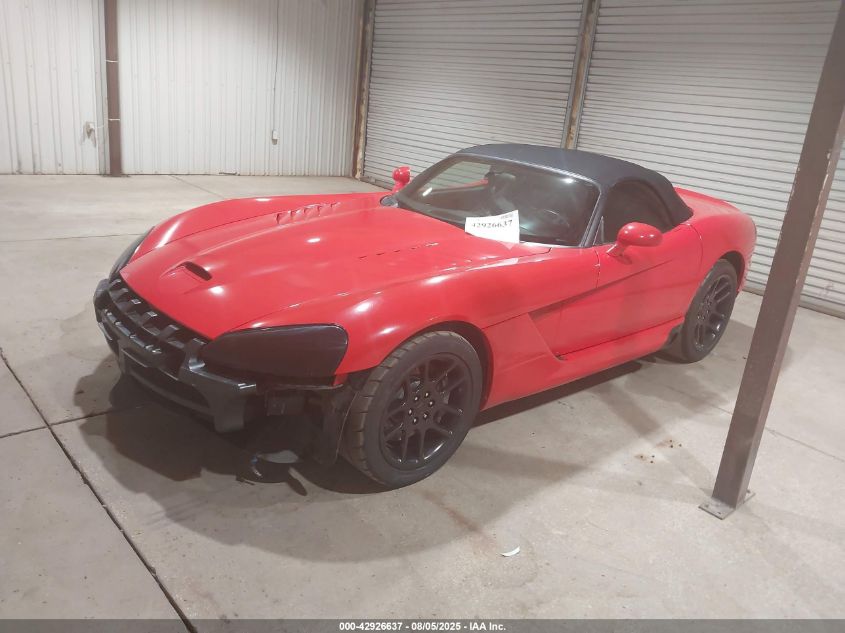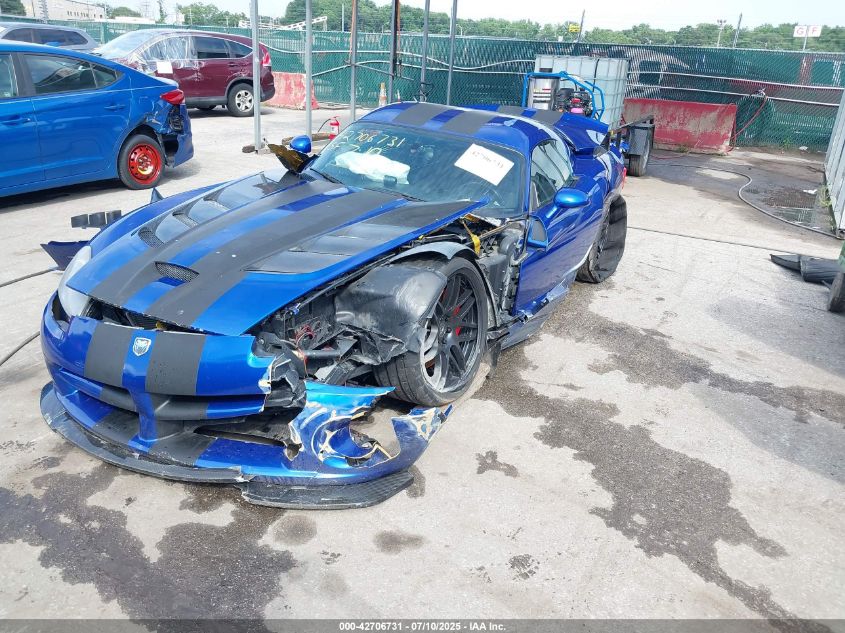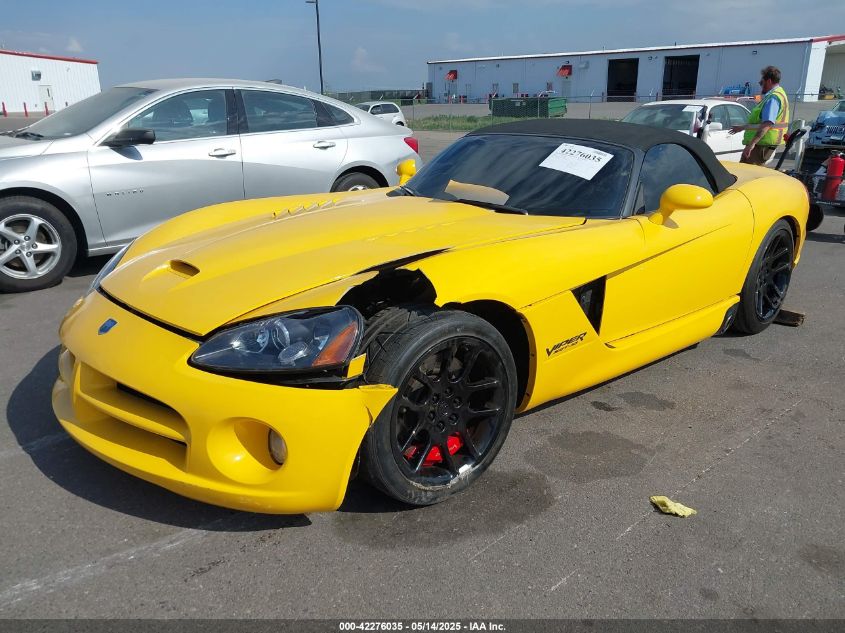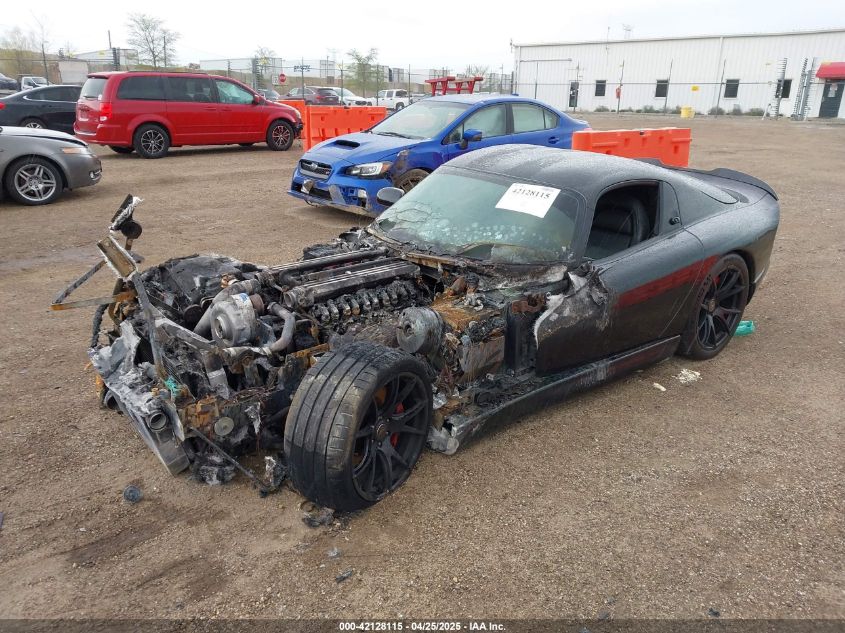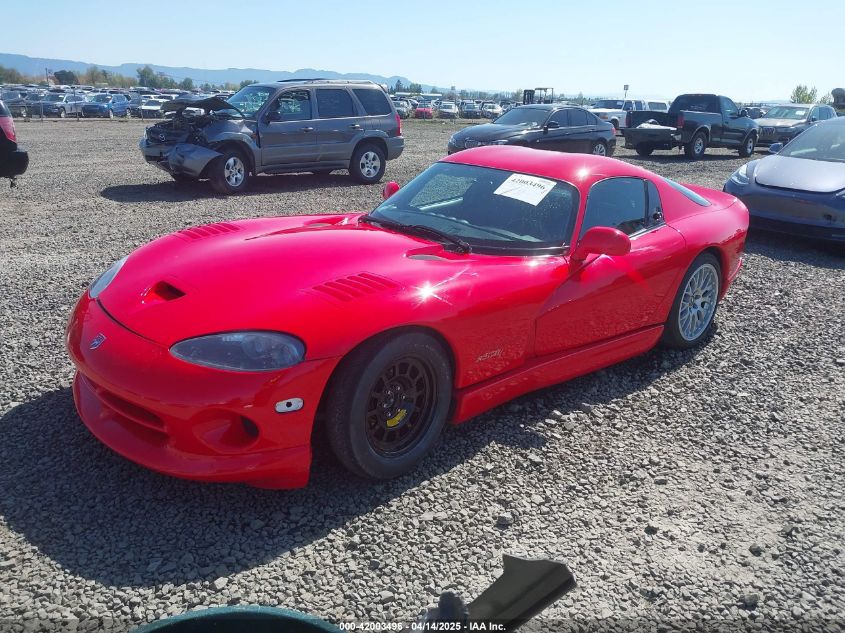1997 DODGE VIPER | 1B3ER69E3VV301323
Lot details
- Sale Date2021-05-27
- Lot Number42501941
- ACV81084 $
- Sale documentPA - undefined
- LocationPA - PITTSBURGH NORTH
- Odometer35,031 miles (56,377 km)
- Primary DamageBURN
- Secondary DamageFRONT END
Vehicle specifications
1
~$70,000
Engine: 8.0L V10
Torque: 664 Nm
0–100 km/h: ~4.0 s
The Dodge Viper GTS (1999–2002) was the ultimate evolution of the first-generation American supercar — a 450-horsepower, naturally aspirated brute with no driver aids, no luxury, and no compromises. Its 8.0L V10 delivered relentless torque across the rev range, launching the car from 0 to 100 km/h in approximately 4.0 seconds and pushing it to a top speed near 300 km/h.
The GTS coupe wasn’t just a hardtop version of the RT/10 — it featured a stiffer chassis, aerodynamic roof with signature “double bubbles,” and improved high-speed stability that made it more suited for aggressive track driving. Ventilated disc brakes, wide tires, and a long wheelbase gave it immense grip and brutal stopping power, while its manual steering and unfiltered feedback kept the driving experience brutally honest.
This version of the Viper was about muscle-car ethos in a supercar format — raw power, bold styling, and a refusal to soften for mass appeal. With no traction control, no stability management, and minimal electronic intervention, the GTS demanded focus and skill, rewarding the confident with an experience that was as thrilling as it was unforgiving.
Final Bid Dodge Viper (1997)
$37,250
$37,250
$37,250
Body Styles
The first-generation Dodge Viper was launched as a raw, open-top two-seater roadster (RT/10) in 1992. It had no side windows, no exterior door handles, no airbags, and no roof — only a fabric snap-on soft top and zippered vinyl side curtains. Its brutalist styling featured side-exit exhausts, a massive clamshell hood, and deeply sculpted body panels over wide tires. In 1996, the second generation (SR II) brought meaningful refinement: lighter panels, factory-fitted air conditioning, power windows, dual airbags, and improved cooling.
The biggest evolution came in 1996 with the Viper GTS Coupe, which added a fixed roof, double-bubble canopy for helmet clearance, and improved aerodynamics. The GTS was more civilized, quieter, and structurally stiffer — yet faster and more powerful. Both body styles featured long hoods, cab-rearward proportions, aggressive vents, and unmistakable muscle-car aggression, standing in stark contrast to sleek European rivals.
Model Name Meaning (Manufacturer)
The name “Viper” was chosen by Chrysler to evoke danger, speed, and American muscle. The project, spearheaded by Bob Lutz and Tom Gale, was meant to channel the spirit of the Shelby Cobra for the modern era. "RT/10" stands for Road and Track / 10 cylinders, while "GTS" stands for Gran Turismo Sport, signifying a harder-edged, coupe-bodied grand tourer.
Model Name Meaning (Languages)
“Viper” is English for a venomous snake — an immediate symbol of lethal performance and coiled aggression. Unlike alphanumeric European names, the Viper name communicates emotion and threat. “GTS” originates from Italian Gran Turismo Sport, used across brands to designate high-speed touring coupes. "RT" echoes American muscle naming traditions, further emphasizing its domestic performance lineage.
Body & Interior Colors and Rims
Early Vipers came only in Viper Red, later expanding into Viper Black, Stone White, Emerald Green, and the iconic GTS Blue with dual white stripes introduced in 1996 — instantly associated with American motorsport. Other rare colors included Silver, Graphite, Steel Gray, and even yellow and Sapphire Blue. Special editions like the Final Edition (2002) added unique red/white paint schemes and number plaques.
Interiors were minimalist and purposeful. The early RT/10 had a black vinyl dash, basic analog gauges, and no airbags. Later SR II models added leather trim, optional two-tone seats, airbags, and improved HVAC. The GTS added carpeted door panels, better insulation, and a roofliner. Seating remained tight but deeply bolstered. There were no driver aids — no traction control, no ABS (until 2001), and no electronic nannies.
Wheels were 3-spoke cast aluminum on early RT/10s, with 17-inch sizes. From 1996 onward, GTS and updated RT/10s wore 18-inch 5-spoke alloys, with polished or painted finishes. Tires were massive Michelin or later Kumho performance compounds — 275 front, 335 rear — delivering unfiltered grip but demanding driver respect.
Top Expensive Options
- Hardtop roof panel for RT/10: $2,500
- Air conditioning (early models): $1,800
- GTS Blue with white racing stripes: $2,000
- Leather two-tone interior upgrade: $1,200
- Alpine premium stereo with CD changer: $1,100
- Lightweight forged wheels (2001–02): $1,500
- Final Edition package (2002): $3,000
- Anti-lock brakes (introduced 2001): standard on later models
- Tonneau cover for soft top: $600
- Special stripes or paint delete: $0 (dealer option)
vs Competitors
The Viper faced off with a unique mix of rivals. Compared to the Chevrolet Corvette C4/C5, the Viper offered far more power, torque, and presence — at the cost of comfort and refinement. While the Corvette was easier to live with and better on long drives, the Viper delivered pure, analog performance with far less forgiveness. Against the Ferrari 348 or F355, the Viper offered more brute force for less money, though with none of the finesse or high-revving precision.
Versus the Porsche 911 (964/993), the Viper was louder, less composed in corners, but faster in a straight line and more intimidating to handle at the limit. Its lack of ABS or traction control until 2001 meant the driver was entirely responsible for keeping 450 hp in check. And while European exotics boasted refinement, the Viper wore its brutality like a badge of honor. It was a street-legal track car for people who didn’t care about subtlety — and it showed.
Fun Fact
The Dodge Viper’s 8.0L V10 engine was developed with help from Lamborghini, which was owned by Chrysler at the time. Although based on a truck V10 block, the final unit was aluminum, designed by Lamborghini engineers, and hand-assembled in Michigan. The Viper also had no airbags or traction control for most of its life, and even the hood was a single molded clamshell that cost over $15,000 to replace — making early Vipers as dangerous as they were iconic.





